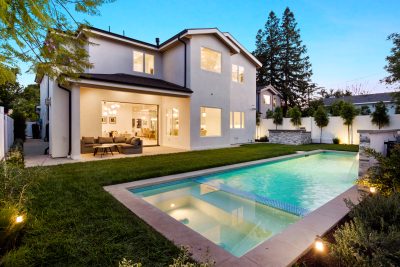
ADU Permit in Los Angeles: A Comprehensive Guide
May 16, 2023
ADU Permit in Los Angeles: A Comprehensive Guide
Introduction:
Navigating the process of obtaining a building permit in Los Angeles, especially for Accessory Dwelling Units (ADUs), can often seem daunting, particularly considering the timeline involved. This guide will shed light on the typical duration and steps involved in securing a building permit in the City of Angels, specifically focusing on ADUs, a favorite among Angelenos.
Understanding Building Permits
Building permits are official approvals issued by the Los Angeles Department of Building and Safety (LADBS). They certify that a planned construction project, including ADUs, complies with the city’s building codes and regulations.
Why are Building Permits Necessary?e
Building permits are an integral part of the construction process. They are necessary as they establish a standard for all construction, ensuring that every structure built in Los Angeles adheres to local building codes. These codes, created with public safety in mind, are designed to protect residents from potential hazards like structural failure, fire risks, or poor sanitation. Without the enforcement of these codes through the permit process, the quality and safety of buildings could vary widely, posing significant risks to occupants and neighbors.
In the context of ADUs, these permits are even more crucial. ADUs, also known as in-law units or secondary suites, are self-contained residential units located within or adjacent to a primary residence. Given their proximity to existing homes, it’s vital to ensure that they’re built in compliance with safety standards to prevent potential risks. Moreover, as ADUs often involve converting existing structures like garages, it’s essential to ensure these renovations meet safety regulations.
The permitting process also aids city planning. It allows city officials to maintain a record of the city’s changing landscape and manage development in a way that aligns with the city’s overall planning goals. This can help in managing the city’s infrastructure and resources more efficiently.
The Building Permit Application Process
Securing an ADU permit involves several steps, including submitting an application, architectural plans, and engineering drawings. Understanding this process helps in managing project timelines more effectively.
Steps in the Permit Application Process
The first step in obtaining a building permit is to submit an application to the Department of Building and Safety (LADBS) or the relevant planning department in your jurisdiction. This application should include a detailed description of the proposed project, including the type of work to be carried out, the location, and the parties involved. It’s crucial to provide accurate and comprehensive information in your application to prevent potential delays in the review process.
Once the application is submitted, the planning department will review the proposed project’s details. This review process includes checking if the project complies with the local building codes and zoning regulations. In some cases, the project might need approval from other departments or entities. For instance, if you’re planning to build an ADU, it might require clearances from departments other than planning itself, like power utilities.
After the review, the planning department may either approve the application, request additional information, or suggest modifications to ensure compliance with local regulations. If the permit is approved, you will need to pay the permit fees before construction can begin. The entire process, from submission to approval, requires careful planning and patience.
Factors That Influence the Permitting Timeline
Numerous factors can influence how long it takes to get a building permit in Los Angeles. These include the complexity of the project, the accuracy of the submitted documents, and the LADBS’s current workload.
How Project Complexity Affects the Timeline
Complexity in a construction project can significantly affect the timeline for obtaining a building permit. A simple project, like a minor renovation or alteration, usually has fewer requirements and thus a quicker approval process. However, more complex projects, such as constructing an ADU, require a more detailed review due to their potential impact on the surrounding environment and existing structures.
The complexity of a project often determines the number of departments involved in the review process. For instance, an ADU may require additional clearances from the power utility, fire department, or even the coastal zone review department if located near the coast. Each department conducts its own review, which adds to the overall timeline. Therefore, it’s essential to factor in these potential delays when planning the construction schedule.
Additionally, complex projects often require more documentation, including architectural plans, engineering drawings, and sometimes even environmental impact reports. Preparing these documents can be time-consuming, and any inaccuracies can lead to delays in the review process. Therefore, working with experienced professionals who understand the permitting process can be invaluable in ensuring the process goes smoothly.
Typical Timeline for Getting a Building Permit in Los Angeles
While timelines can vary, it generally takes between several weeks to a few months to secure a building permit in Los Angeles. According to ADU designers, most ADU permits are issued within four to six months.
Expected Timeline for Different Project Types
The time it takes to obtain a building permit in Los Angeles can vary greatly depending on the type and complexity of the project. For smaller projects, such as minor home renovations or alterations, the
permit approval process can take a few weeks. However, for more complex projects, like constructing an ADU, the process can take several months.
According to experienced ADU designers and builders, most ADU permits in Los Angeles are issued within four to six months. However, this timeline can vary depending on the jurisdiction. For example, in unincorporated areas of Los Angeles County, permits are issued by the county’s public works department, which might have a different processing timeline.
The timeline can also be affected by the unique characteristics of the project. For instance, if the ADU project involves building in a coastal zone or requires clearances from multiple departments, the permit approval process can take longer. It’s crucial to consider these factors when planning the construction schedule.
Los Angeles County’s Building Permitting Process
The building permitting process in Los Angeles County is designed to ensure all construction projects adhere to the established safety and zoning regulations. However, the process is often seen as complex due to its multiple steps and the involvement of various departments. The process starts with the submission of a detailed project application to the relevant planning department, followed by a thorough review of the proposed project.
The review process involves checking the project’s compliance with the local building codes and zoning regulations. In addition, the project may require clearances from other departments depending on its nature. For instance, constructing an ADU may need approval from the power utility department, fire department, or even the coastal zone review department if it’s located near the coast. Once all departments have approved the project, the applicant can pay the permit fees and start construction.
However, it’s important to note that Los Angeles County is vast, comprising 88 separate cities, each with its own planning department. As a result, the permitting process can vary across jurisdictions. Therefore, it’s crucial to familiarize yourself with the specific requirements and procedures in your area to ensure a smooth process.
The City of L.A.’s Improved Permitting Process
The City of Los Angeles has been working to streamline its ADU permit process to make it more efficient and user-friendly. Unlike other jurisdictions where plans have to be sent to each department one by one, the L.A. Department of Building and Safety (LADBS) reviews the plans and consolidates the required changes at the beginning of the process. This approach reduces the time taken to obtain approvals from various departments, thus shortening the overall approval timeline.
In addition to this consolidated review process, the city has also adopted digital technologies to make the process more convenient. The LADBS recently began accepting plans online, saving time for designers during the submittal process. This online system not only speeds up the submission process but also makes it easier for applicants to track the progress of their application.
Despite these improvements, it’s essential to understand that the permitting process can still take time, given the need to ensure all projects comply with safety standards. Therefore, patience and proper planning are key to navigating this process successfully.
Expedited Permitting in Los Angeles
In certain situations, expedited ADU permits may be available. This process can speed up the approval time.
When and How to Apply for Expedited Permitting
Expedited permitting is typically available for projects that meet specific criteria. This section will outline these criteria and guide you on applying for expedited services.
Navigating Delays in the Permitting Process
Delays can occur in the ADU permit process for various reasons. Understanding these can help keep your project on track.
Common Reasons for Delays and How to Handle Them
While the ADU permit process is designed to ensure safety and compliance with building codes, it can often be challenging to navigate. One of the most common challenges is the extensive review process, which involves multiple departments. Each department conducts its own review, which can add to the overall timeline. Additionally, certain projects may require special clearances, adding another layer of complexity to the process.
Another significant challenge is understaffing at the planning department. Many city planning offices across the state are understaffed, which can lead to longer-than-ideal wait times for building permits. Also, the fact that many of the plan check officers are relatively new at the job can add to the delays.
Despite these challenges, it’s important to remember that the permitting process is necessary for maintaining safety standards. As such, understanding the process and working with experienced professionals can help mitigate these challenges. Engaging an architect or a contractor who is familiar with the local building codes and the permitting process can greatly reduce potential delays and complications.
Conclusion:
The process of obtaining an ADU permit in Los Angeles, especially for an ADU, can take some time. But with the right guidance, such as from experienced ADU designers, and understanding of the timeline and the process, it can be made smoother. Always remember that building an ADU is a long-term investment that can provide housing for decades, generate income, and increase the resale value of your property. Despite the wait, the benefits of an ADU are worth it. Reach out to experienced professionals in your region to guide you through the process, and soon enough, you’ll be expanding your property and your possibilities with an ADU.


